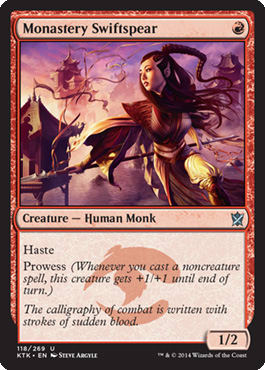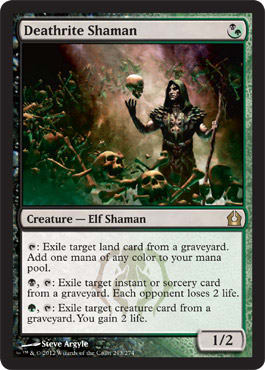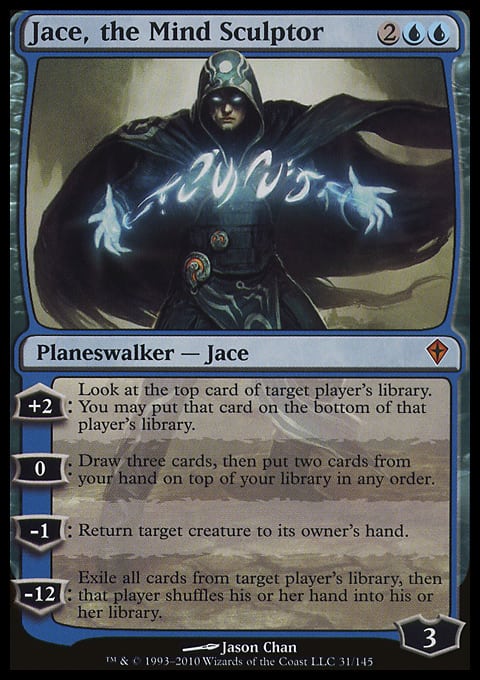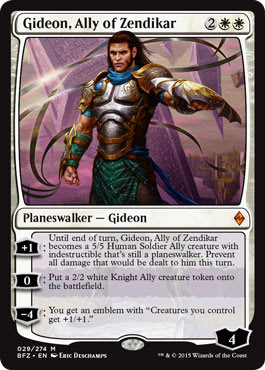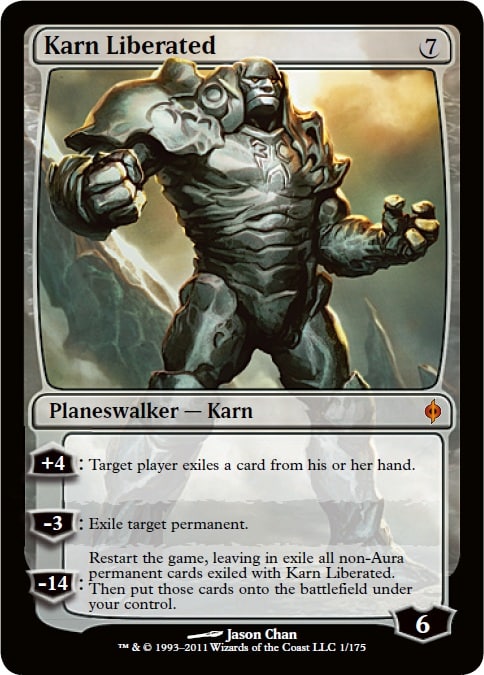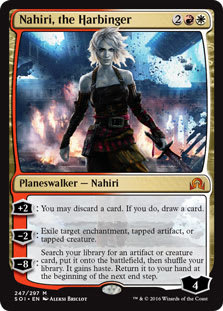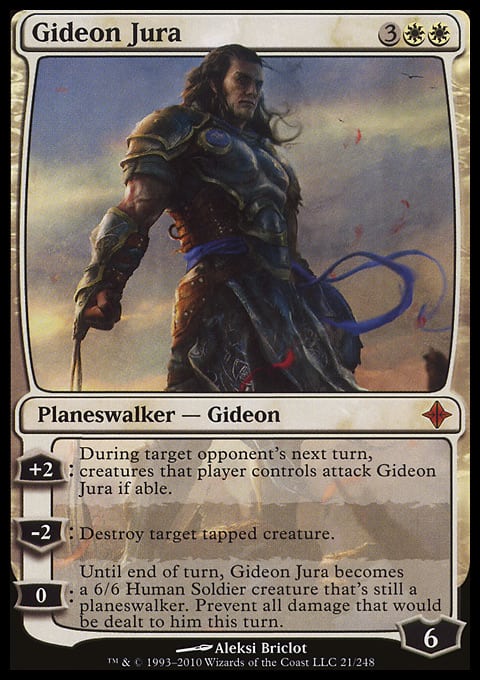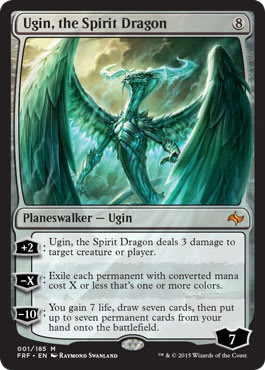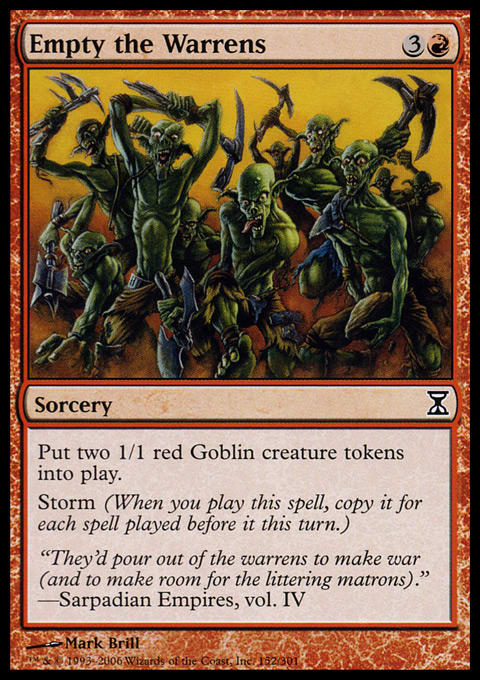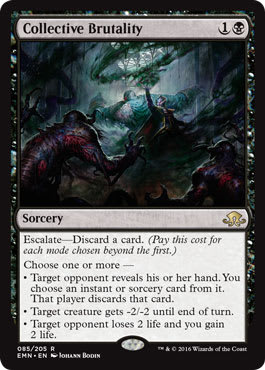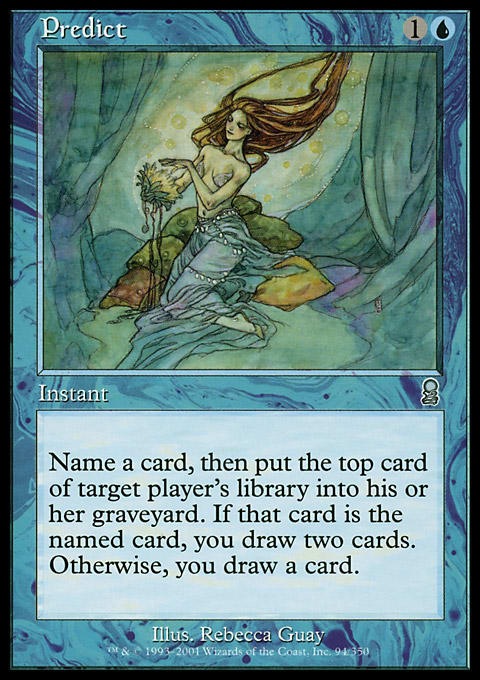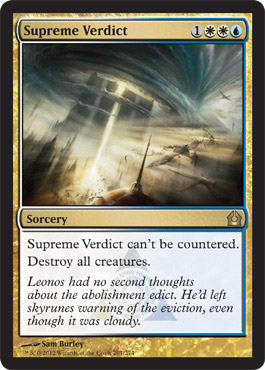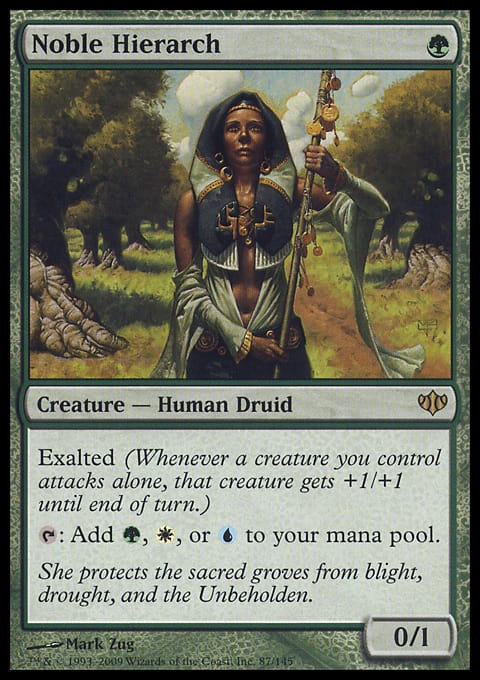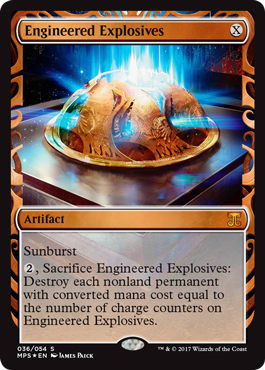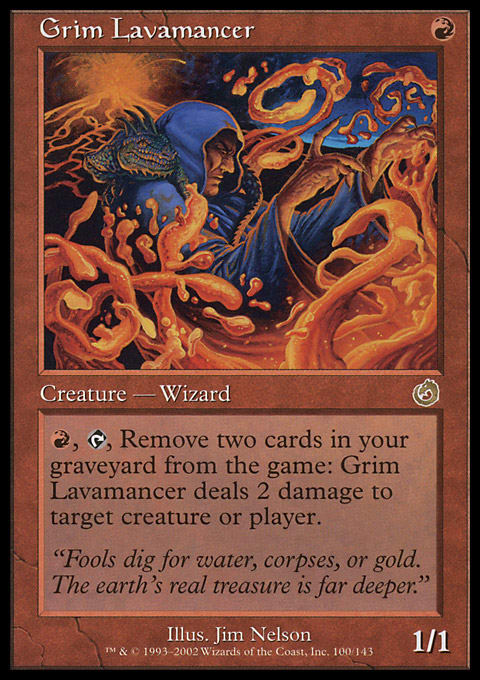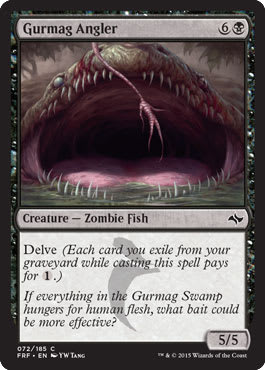This week, it’s time to try something a little different from the traditional, “Here’s a decklist, here’s a new piece of tech, and some matchup advice” that these articles usually entail. This week, it’s time to get a little good old-fashioned debate going on. After all, if ESPN can spend three hours every day rehashing the same old “Lebron vs. MJ” discussion, I can spare an article to talk about some of the GOATs (that stands for Greatest Of All Time, for those not in the know), the best cards ever printed. And if this one doesn’t start a few discussions in the comments, nothing will. It’s difficult to organize these types of lists, but I hope a few of them are new and refreshing, and offer a different perspective on the true greats than we’re used to seeing.
Now, we all know the pseudo-cycle of busted 2-drops in each color. Stoneforge Mystic, Snapcaster Mage, Dark Confidant, Young Pyromancer, and Tarmogoyf. These Eternal staples truly brought (over the seven years it took to finally print all of them) Magic from its first incarnation as a spell-based game to Magic as a creature-based game. Fortunately, these aren’t the only heavy hitting creatures in Magic nowadays. 1-drop creatures are the new 2-drop creatures!
The best 1-drop creatures in each color:
- White: Mother of Runes
- Blue: Delver of Secrets
- Black: Death's Shadow
- Red: Monastery Swiftspear
- Green: Noble Hierarch
- And of course, Gold: Deathrite Shaman
Each of these cards is iconic in its own way, and representative of its color. Mother of Runes has been a standout for nearly twenty years, now, with most recent success as one of the lynchpins of the fairest deck in Legacy, Death and Taxes. With a real supporting cast, Mother of Runes manages to hold together a bunch of unassuming creatures and turn them into Legacy contenders.
Delver of Secrets . . . oh, Delver of Secrets. For a small deck-building restriction, you get a 3-power flyer for one mana. This is the kind of card Merfolk of the Pearl Trident or Flying Men wishes they could be, and when you step back and compare contemporary Aggro-Control decks to old-school Turbo Xerox or Threshold, the disparity in creature quality is laughable. For bringing Blue decks a better Wild Nacatl, Delver will always have a unique place in Magic. (Seriously, though, they could have just shaved off a power on the flip side and we wouldn’t have to sweat any of this!)
Death's Shadow is a new addition to the group, one that never got truly abused until recently in Modern. The card exemplifies Black perfectly. For taking a big risk with your life total, you get some extreme power, but you run the risk of dying at any point. Though Dark Confidant’s flavor text reads, “Greatness, at any cost,” Death's Shadow has a similar flavor, with a little more vulnerability and an even higher power ceiling than Bob (Dark Confidant). For turning drawbacks into advantages, and for promoting some of the oddest interactions in the game (think “Tarfire myself, you’re dead!”) Death's Shadow is a true masterpiece.
Monastery Swiftspear has some competition, it’s true. If it’s not Goblin Guide, it’s Goblin Welder, or (in another place and time) Goblin Lackey or even Mogg Fanatic. Though Welder is a truly unique effect, and Lackey has the highest power ceiling, Monastery Swiftspear is the best Red 1-drop we’ve ever seen. From tag-teaming with Goblin Guide to put Modern Burn on the map, to tag-teaming with Delver of Secrets in various ![]()
![]() concoctions over the years, Swiftspear has a power level floor slightly below Goblin Guide, but a ceiling high above it, and it exemplifies Red’s philosophy more than Welder or Lackey. Monastery Swiftspear is the card that puts opponents to the test. “Should I block with Deathrite Shaman? I save a damage this way, but if they have a burn spell . . . ” Swiftspear is the card that combines with Mutagenic Growth and Temur Battle Rage to end games on the third turn. Swiftspear doesn’t accidentally draw the opponent out of mana screw, unlike some disloyal Guides. We may eventually see a better Red 1-drop, though I’m not holding my breath.
concoctions over the years, Swiftspear has a power level floor slightly below Goblin Guide, but a ceiling high above it, and it exemplifies Red’s philosophy more than Welder or Lackey. Monastery Swiftspear is the card that puts opponents to the test. “Should I block with Deathrite Shaman? I save a damage this way, but if they have a burn spell . . . ” Swiftspear is the card that combines with Mutagenic Growth and Temur Battle Rage to end games on the third turn. Swiftspear doesn’t accidentally draw the opponent out of mana screw, unlike some disloyal Guides. We may eventually see a better Red 1-drop, though I’m not holding my breath.
Noble Hierarch, when it was printed, looked like a cool Birds of Paradise variant that gave a nominal boost to Bant decks that wouldn’t be bothered by the card only producing three colors. Then Infect happened, and the card skyrocketed. We started to realize how often an extra +1/+1 on the attack actually pushed through far more than just one extra damage. Rather than your 3/3 trading with theirs, they could now no longer profitably block, and that +1/+1 actually resulted in four extra damage. Add up situations like that over the course of a lifetime of play, and Noble Hierarch suddenly started looking a lot better than a simple Birds of Paradise. Not to mention, of course, that the unassuming creature gave a mana advantage to Infect while providing something akin to a Glorious Anthem effect for that deck. Infect thrives on the “false tempo”, or as I like to call it, “stick and move”, philosophy, where a card like Noble Hierarch shines. When opponents are trading their two-mana removal for your one-mana protection spells, all the while getting clocked for two poison counters a turn, it ends up looking pretty good for you. Not to mention the fact that Birds of Paradise drawn late are often redundant and useless, while a Noble Hierarch on turn six can provide a relevant and repeated source of extra damage. Forget Wild Nacatl, forget Wirewood Symbiote, forget Nimble Mongoose. Noble Hierarch is the best overall Green 1-drop, and it’s not particularly close.
Of course, where would a list of the best 1-drop creatures be without the best one of all? Deathrite Shaman is (arguably) bannable in Legacy, as it provides a mana advantage, lifegain, reach, and graveyard hate all in a single card. If it weren’t for Deathrite Shaman, all of the above creatures could make a case for being the best of all time but Deathrite is the Lebron James of 1-drops. Great early, great late, does everything, and each member of the whole lineup of the other great 1-mana creatures pales in comparison. (Kind of like the Golden State Warriors, but I digress.) If Dark Confidant started the trend of “creatures are better than spells now” in Magic, Deathrite Shaman almost assuredly put the final nail in the coffin, and Magic is a better place for their impact.
Now, one-mana creatures are cool and all, but there’s one thing even cooler than only paying one mana for your creatures, and that is paying no mana at all for your creatures! Alex Majlaton’s favorite, Ornithopter, narrowly edges out Memnite, Vine Dryad, Narcomoeba, Ichorid, Bloodghast, Prized Amalgam, Nether Shadow, Allosaurus Rider, and Dryad Arbor for top honors here, although the judging panel may be biased. (In all seriousness, Dryad Arbor is probably the best one here, if only because of the repeated surprise factor from fetching a creature off an unassuming Verdant Catacombs.) Also note the fact that half of these cards are only good because of the existence of the Dredge mechanic, which should tell you something about the fairness of said mechanic, but that’s a discussion for another day.
Enough about creatures, though. Let’s talk about the newest card type in all of Magic! They’ve only been around for ten years, but in that time Planeswalkers have added a dramatic new dimension to the game, and continued the push for Magic to be more about board presence and tempo and less about card advantage and navigating your way toward resolving a single key card draw spell. To be fair, those games still exist, but they are the exception rather than the norm. Just like with 1-drop creatures, we have an obvious king, but after that the waters get murky. Allow me to clear them up!
The Ten Best Planeswalkers of All Time:
Whoop-de-doo, the first hundred-dollar Standard card (and the poster child for overpowered Mythics) is the best Planeswalker ever! I sincerely hope we never get a more overpowered Planeswalker than his Royal Sculptness, but it sure is fun to reminisce about those golden days in early 2011. Terrific card, and there’s not that much more that needs to be said. Many, many games of Magic were decided by who stuck their Jace first, and I foresee many more in Legacy and Vintage before his days are done.
Not my cup of tea, personally, as I prefer my midrange decks to include Snapcaster Mage (and thus keep said Snapcaster in hand to flashback whatever answer I may need!) but Liliana determines games. The -2 mode answers all manner of generally unanswerable creatures (think Hexproof creatures and True-Name Nemesis) and the +1 grinds opponents right out of the game. If Jace is the undisputed king, Liliana of the Veil is the Queen of Planeswalkers, and will be for many years to come.
The newest addition to the pantheon of great Planeswalkers, Gideon continues to terrorize Standard while making infrequent appearances in Modern and even Legacy. The “White Jace”, so to speak, in Standard, your win percentage when you have an uncontested Gideon is about as high now as it was with an uncontested Jace in Standard circa 2011. When he rotates out, many will say “good riddance”, but don’t count this bad boy out as a sideboard option in a few Modern and Legacy decks.
Big Chief Tron Robot himself, Karn Liberated is pretty damn good on turn three in Modern. Sure, he doesn’t see a ton of play outside of that, but the power level is undeniably there, and as long as people are Dredging and Burning and Storming their way to victory on the third and fourth turns in that format, I’m perfectly okay with some big-mana enthusiasts dropping big old Planeswalkers into play unfathomably early. Unfortunately, he’s basically never seen outside of those specific decks, but he’s been a thorn in my side enough to give him the fourth spot on the list of greats.
This is sort of a cop-out member of the supreme team of Planeswalkers, because this Jace is only the back half of a creature card, but he still gets the job done. Folks are sleeping on this Jace in Modern and Legacy right now, as he works exceptionally well as a repeatable Snapcaster Mage-type effect that also has a game-winning Ultimate. For two mana, it’s hard to get much better than that. Don’t forget, this guy was also a nearly-hundred-dollar Mythic at points during his Standard tenure. Unearth + small Jace is still a thing you can do in Legacy, don’t forget it!
The once-ballyhooed “Red Jace”, Chandra failed to impress upon her entry into Standard, but just like our own top dog, that may have been a product of her circumstances. Big Jace had to contend with Bloodbraid Elf keeping him down, and similarly this Chandra has to contend with a whole mess of aggressive decks like Zombies and Mardu Vehicles, as well as (of course) Aetherworks Marvel. Just be aware that this Chandra has a tremendously high power level, and there will come a time and place where she just destroys an unsuspecting format.
This spot used to be occupied by Ajani Vengeant, but Nahiri just does what Ajani does so much better! Her ultimate ability (in concert with Emrakul, the Aeons Torn) forms the backbone of an entire Modern archetype, and her loyalty rises faster than most decks can handle. The card filtration is a nice bonus, and of course, she can defend herself or provide a tremendously valuable answer to a rogue enchantment or tapped creature. If Heart of Kiran didn’t have Vigilance, she’d have been even more impressive in the previous Standard format, but as it stands she’s just a powerful option that many have been sleeping on.
The original “Superfriend”, this Gideon dominated Standard alongside Jace during their early tenure together. Gideon stabilized all but the most lopsided battlefields, and often spelled doom for unprepared opponents. The classic Gideon squeeze was that opponents would need to dump more creatures on the board to actually answer the Planeswalker, but doing that left them tremendously vulnerable to a large sweeper that would end the game on the spot. If people don’t have answers to large, high-loyalty Planeswalkers in their Modern decks, Gideon will often just dominate a midrange mirror.
This bad girl rocked ![]()
![]() and Esper Control,
and Esper Control, ![]()
![]() Midrange, and even
Midrange, and even ![]()
![]() or Mardu decks of various stripes during her tenure in Standard, providing a selective sweeper, a nearly unbeatable stream of chump blockers, and a game-winning ultimate all in one neat package. Just like Gideon before her, the Elspeth squeeze forced opponents to commit to the board in order to break through the stream of Soldier tokens, but left them vulnerable to both spot removal (which would allow the Soldier tokens to keep swarming) or the Elspeth -3, which would often take one or two big creatures down with it. For 6 mana, you get a pretty fine Planeswalker, one that even sees fringe play in Modern.
or Mardu decks of various stripes during her tenure in Standard, providing a selective sweeper, a nearly unbeatable stream of chump blockers, and a game-winning ultimate all in one neat package. Just like Gideon before her, the Elspeth squeeze forced opponents to commit to the board in order to break through the stream of Soldier tokens, but left them vulnerable to both spot removal (which would allow the Soldier tokens to keep swarming) or the Elspeth -3, which would often take one or two big creatures down with it. For 6 mana, you get a pretty fine Planeswalker, one that even sees fringe play in Modern.
The Yoda to Nicol Bolas’s Darth Sidious, Ugin provided an awesome endgame for Abzan and Sultai midrange decks during his tenure in Standard, and now occupies a lot of the same space as Karn Liberated in Modern. Unfortunately, he’s generally slightly worse than old Karn, but the -X effect can still devastate a battlefield.
Honorable mentions go to Saheeli Rai, who only ever wanted a pet cat (and then they took it away from her!), Elspeth, Knight-Errant, who seems to be destined to stand in new Gideon’s shadow, Ajani Vengeant, who likewise stands firmly in Nahiri’s shadow, Dack Fayden, “the greatest thief in the Multiverse!” and ol’ Jace Beleren, who could have been a contender if they hadn’t printed his alter ego so soon after, breaking Planeswalkers forever. Dishonorable mention goes to the new Nicol Bolas, who is likely to be a part of an intolerable four-color Superfriends-Marvel deck as soon as he sees the light of cardboard.
There’s room left for just one more important list this week, and a more strategically serious one at that. There are no Brainstorms, no Wastelands, no Force of Wills on this list. Without further ado, it’s the top ten underrated cards in Legacy, going into Grand Prix Las Vegas.
Top Ten Underrated Cards in Legacy:
A ton of folks are packing Aether Vials, Chalice of the Void, Stoneforge Mystic, Trinisphere, and the like. Be prepared with the best artifact removal spell of all time!
Beware, some Storm pilots are packing extra copies of these in the sideboard to increase their percentage of “raw combo” post-sideboard. Watch out that you don’t get swarmed by 8-10 Goblins on turn two or three!
I’ve sung the praises of this card before, but it bears repeating. This Disfigure/Duress split card is just stunning right now!
Watch out for New Miracles, a Predict/Portent engine deck with a huge number of cantrips, a strong Delver matchup, and many of the same strengths as old Miracles. Don’t be surprised if your opponent hits you with Terminus off of a Portent!
If it isn’t new Miracles hitting their Terminus, it’s just plain old uncounterable Wrath of God, which is quite nice now as a clean answer to Mother of Runes-heavy boards and Gurmag Angler + Deathrite Shaman boards alike.
Bant Deathblade is on the rise, and this card is the surest sign of that particular sub-archetype. Be ready for the multicolored monstrosity! (Oh, and Infect may pick up again, mainly because no one is talking about it right now. That’s a Noble Hierarch deck, too!)
A stellar, flexible answer, this card hits Chalice of the Void decks, Death and Taxes, Elves, Lands, and Delver decks where it hurts. I’m happy to have one or two in almost all my midrange decks.
If you don’t have access to Swords to Plowshares, this is your answer to Marit Lage, Reality Smasher, True-Name Nemesis and Gurmag Angler alike. Stellar spell.
Old tech for Deathrite mirrors and against Elves and Death and Taxes, I’m happy to put one or two of these in my Grixis Delver decks as a mini-Visara the Dreadful.
No matter how many times we talk about the big fish, folks still aren’t ready to get smacked with a 5/5 for one mana. Don’t be like those folks. Even though Las Vegas is in the middle of the desert, bring your fishing gear.
Hopefully this brief walk through the hallowed halls of greatness helped bring the hype for the upcoming Grand Prix. It looks like it will be an awesome event, so do your part and take a shot (or three) at glory!















